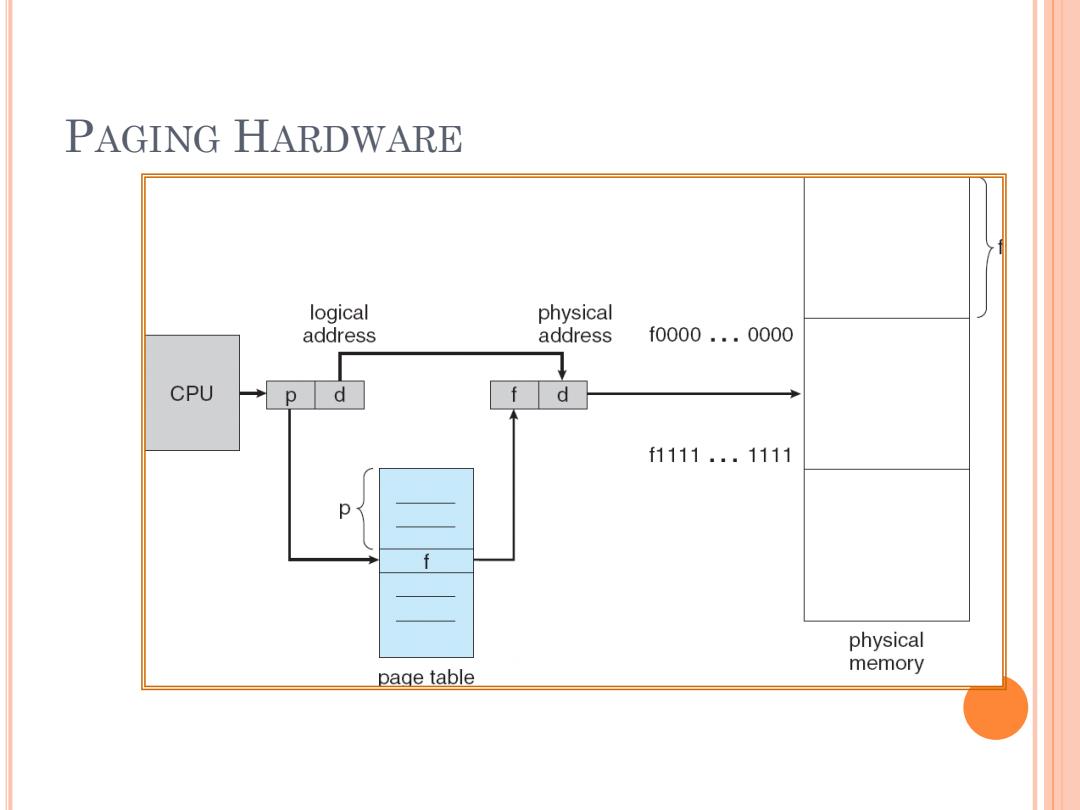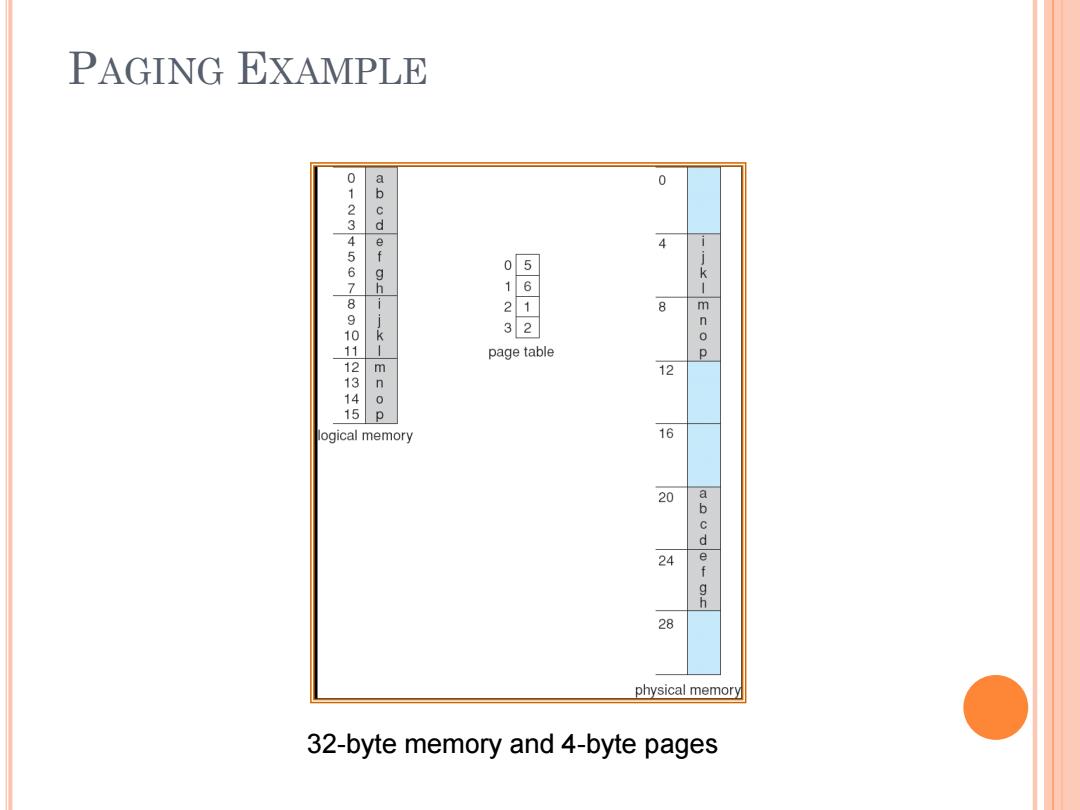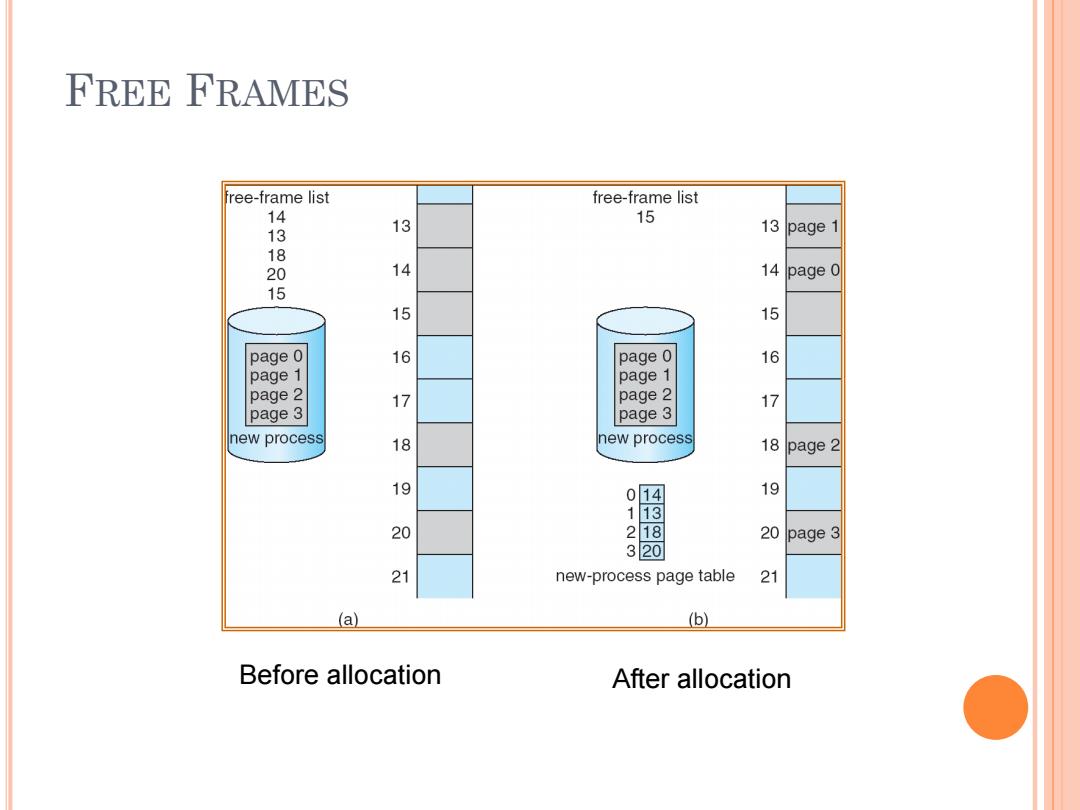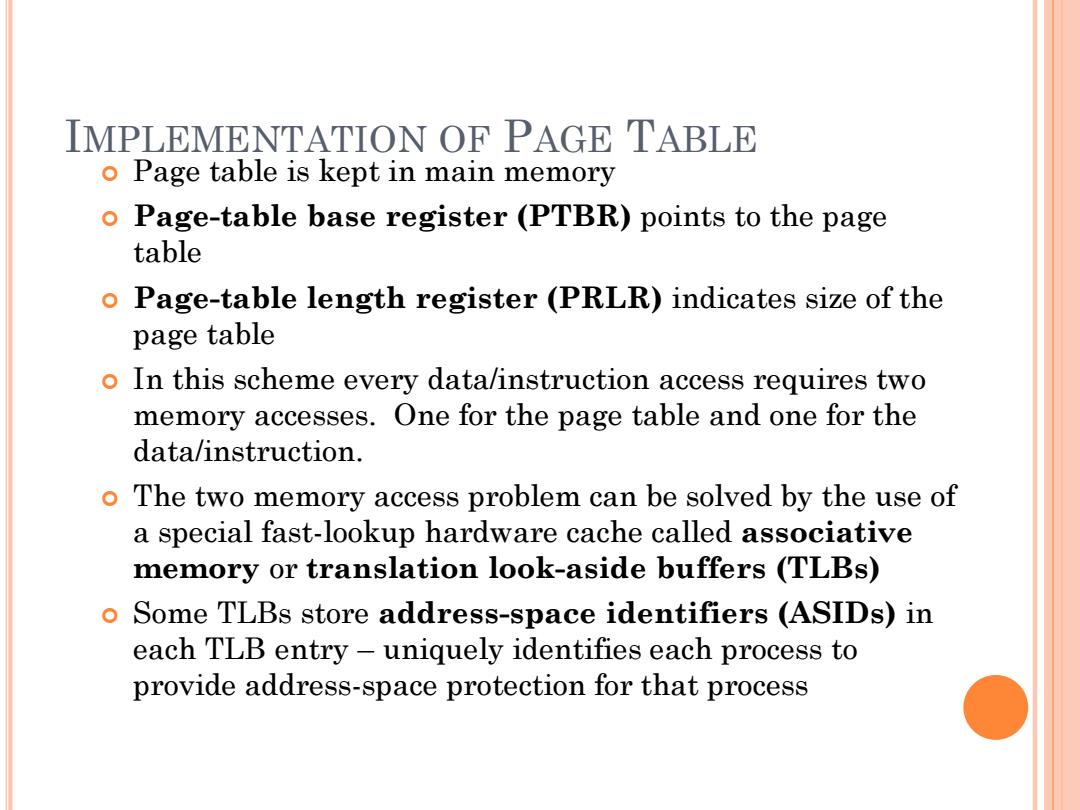
PAGING HARDWARE logical physical address address f0000...0000 CPU p d f d f1111..1111 p physical memory page table
PAGING HARDWARE

PAGING MODEL OF LOGICAL AND PHYSICAL MEMORY frame number page 0 0 page 1 1 4 1 page 0 page2 2 3 2 3 page 3 page table 3 page 2 logical 4 page 1 memory 5 6 7 page 3 physical memory
PAGING MODEL OF LOGICAL AND PHYSICAL MEMORY

PAGING EXAMPLE 0 01234567 Q O 00-O 01 - 89101 据 8 m -X n page table p 2131415 m 12 n p ogical memory 16 20 24 f 28 physical memory 32-byte memory and 4-byte pages
PAGING EXAMPLE 32-byte memory and 4-byte pages

FREE FRAMES free-frame list free-frame list 14 15 13 13 13 page 1 18 14 14 page 0 15 15 15 page 0 16 page 0 16 page 1 page 1 page 2 17 page 2 17 page 3 page 3 new process 18 new process 18 page 2 19 014 19 113 20 218 20 Ipage 3 320 21 new-process page table 21 (a) (b) Before allocation After allocation
FREE FRAMES Before allocation After allocation

IMPLEMENTATION OF PAGE TABLE o Page table is kept in main memory o Page-table base register(PTBR)points to the page table o Page-table length register (PRLR)indicates size of the page table o In this scheme every data/instruction access requires two memory accesses.One for the page table and one for the data/instruction. o The two memory access problem can be solved by the use of a special fast-lookup hardware cache called associative memory or translation look-aside buffers (TLBs) 0 Some TLBs store address-space identifiers (ASIDs)in each TLB entry-uniquely identifies each process to provide address-space protection for that process
IMPLEMENTATION OF PAGE TABLE Page table is kept in main memory Page-table base register (PTBR) points to the page table Page-table length register (PRLR) indicates size of the page table In this scheme every data/instruction access requires two memory accesses. One for the page table and one for the data/instruction. The two memory access problem can be solved by the use of a special fast-lookup hardware cache called associative memory or translation look-aside buffers (TLBs) Some TLBs store address-space identifiers (ASIDs) in each TLB entry – uniquely identifies each process to provide address-space protection for that process